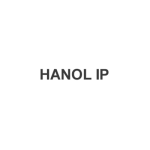Recently, the Korean Supreme Court made a key decision regarding how to read the prior art when making an inventive step determination (2013 Hu 2873 and 2880 (consolidated), January 14 2016).
In Korea, a broad range of prior art may be used to deny the inventive step of claims. For example, a prior art reference which discloses an incomplete invention or a prior art of which description is insufficient or even defective may qualify as prior art for the purpose of inventive step determination as long as an artisan may understand the technical content of the references. However, no precedent yet clearly addressed the situation when contradictory information is present within the same or different pieces of prior art. The Supreme Court of Korea answered this question for the first time in its recent decision to the pregabalin invalidation case.
Pregabalin ((S)-3-(aminomethyl)-5-methylhexanoic acid) is a blockbuster drug marketed under the brand name Lyrica by Pfizer which is used to treat epilepsy, neuropathic pain, fibromyalgia, and generalized anxiety disorder. In the pregabalin decision, the Supreme Court held that a prior art reference must be considered in its entirety and not just from a portion of description. The Court also held that when a different piece of prior art contradicts other pieces of prior art, they should all be considered together to determine inventiveness.
In this case, claim 1 at issue was "a pharmaceutical composition comprising pregabalin for treating pain". Generic companies filed an invalidation action against the Korean patent with this claim 1. In the first instance of this case, the Korean Intellectual Property Tribunal found that claim 1 was not inventive over the cited prior art. However, on appeal, the Patent Court acknowledged the inventiveness of claim 1. This decision was upheld by the Supreme Court. In the Supreme Court, the challengers made two primary arguments attacking the inventiveness of claim 1, one of which was about elevating the level of GABA (gamma-aminobutyric acid) in the brain.
From a portion of the prior art D1, it was disclosed that pregabalin increases the level of GABA in the brain. On the assumption that the convulsions decrease when GABA level in the brain is elevated, the prior art tested a group of compounds in vitro and in vivo to show that an activation of GAD (L-Glutamic acid decarboxylase), an enzyme which produces GABA, promotes prevention of seizure. However, this relationship between the activation of GAD and the increase of GABA or the increased prevention of seizure was not clear. For example, in case of a pregabalin, activation of GAD was low, but the potency was high. Additionally, there were other pieces of prior art which disclosed no or unclear correlation between the in vitro GAD activation and the increased level of GABA or anti-convulsion activity. In other words, disclosure of D1 that the "pregabalin increases GABA level" was not clear in view of the other parts of the same reference D1 and also disclosures of separate prior art references.
Under this circumstance, the Supreme Court ruled that it would have been not easy for a person having an ordinary skill in the art to conceive the claim 1 invention from the D1's disclosure about pregabalin's ability to increase the level of GABA, which the court believed to be ambiguous.
In the decision, the Court made it clear that "… to determine the inventiveness of an invention, the prior art should be considered in its entirety … not just from the portion of prior art …" The Court further addressed a seemingly new principle in Korea that "… when a different prior art is presented which is contradictory to the (portion of) prior art, then, this prior art reference must also be considered … when determining the inventive step".
This decision seems to be particularly important and useful in the field of life science and chemistry where often the contradictory results are reported in the same technical field in a rather short period of time. This Supreme Court decision is significant in that it made clear that the prior art should be considered as a whole, and in that it presented a new principle that the court must consider all the prior art including those contradictory to each other. Applicants and patent owners now may rely on this new decision to more effectively argue the inventiveness of their claimed subject matters in Korea.
Min Son
Partner, Hanol IP & Law
HANOL Intellectual Property & Law
6th Floor, 163, Yang Jae Cheon-Ro, Gang Nam-Gu
Seoul 06302, Republic of Korea
Tel: +82 2 942 1100
Fax: +82 2 942 2600












